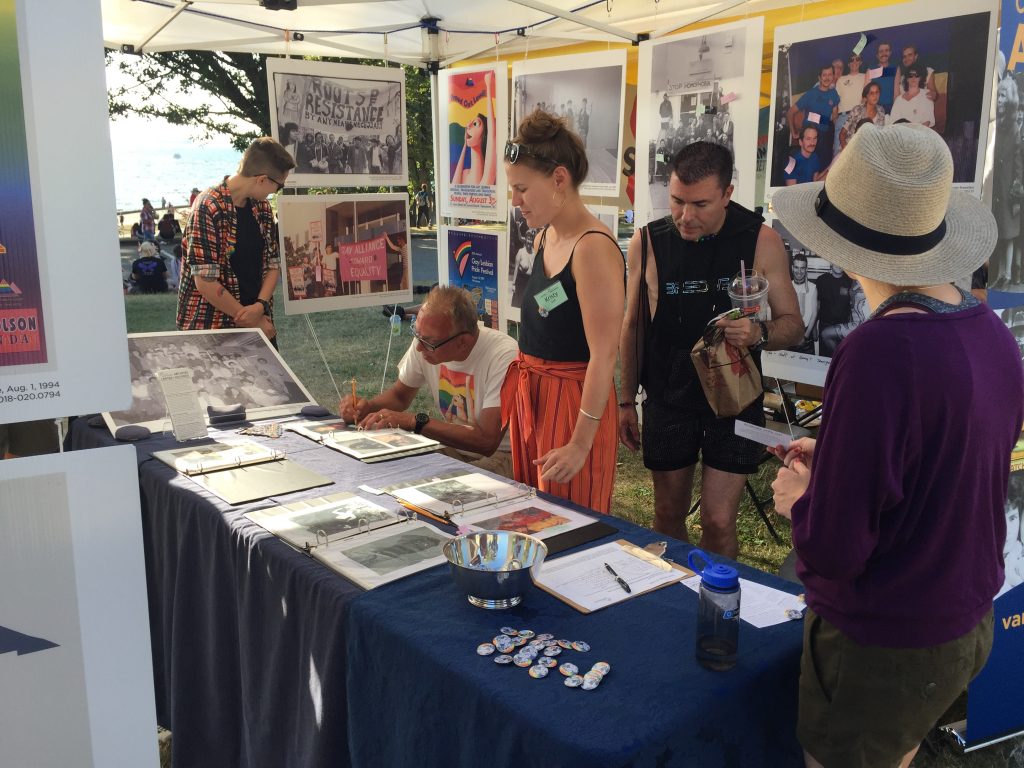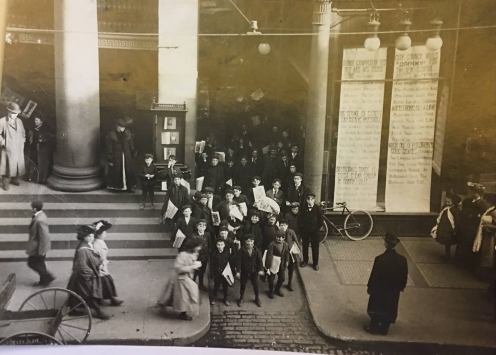The 1938-1939 WNYC City Council programs were the first time in history that the proceedings of an entire legislative session were broadcast to the electorate. Letters to the station called the broadcasts instructive, entertaining, exciting, and a step forward in good government. A WNYC postcard survey determined that a million New Yorkers tuned each week to hear the New York Council session. A bevy of civics groups endorsed the broadcasts with the Women’s City Club calling them, “the best education for citizenship.” The Times gushed it was, “one of the best shows in the city, appealing in equal degree to the studio audience in City Hall and the radio audience over WNYC.”[1]
The previous Aldermanic meetings generally had ten to twenty people in the visitor’s gallery. The newly broadcast City Council meetings were now generating “500 to 600 persons who waited patiently in line for admission to the overcrowded councilmanic chamber.”[2] The city’s paper of record reported:
At times the Council broadcasts became so amusing that people left their radios and flocked to City Hall to see the fun. Borough President James J. Lyons of the Bronx even suggested formally that the proceedings be put on permanent records for their amusement value.[3]
That notion was echoed by comedian Eddie Cantor, who quipped to Mayor La Guardia that he was interested in getting recordings of an unusually long and embarrassing meeting to use during his act. The entertainer stipulated, however, that he reserved the right not to use anything too funny. The Mayor responded:
1938 Telegram from Mayor La Guardia to Comedian Eddie Cantor regarding copies of WNYC City Council broadcasts.
(Courtesy of NYC Municipal Archives)
The Council broadcasts began in a somewhat unexpected way. On January 1, 1938, the newly adopted City charter brought the City Council into existence, and WNYC broadcast the opening ceremonies. “The discussion became so interesting, however, that I ordered the continuation of the broadcast,” wrote WNYC Director Seymour N. Siegel.[4] The Council was scheduled to recess in June, but particular circumstances required an extension through July. WNYC asked listeners over the air if they wanted the meetings to be broadcast for the extra month. The announcement, made just once, generated 1,337 letters asking for the continuation. Station management reported, “In an analysis of these letters by a survey group connected with a prominent eastern university, it was determined that over 80% of the writers believed the Council broadcasts to be among the most important educational features on the air.”[5] Upon reflection years later, one observer described it as “the logical extension of the modern method of reporting a legislative session.”
Overnight in the City of New York, thousands of housewives, business people and others who listened to the radio during the day, had the welcome relief of an interesting, useful radio broadcast of their own government in action to take the place of the usual soap opera which pervaded the air at that hour. No Hooper rating is available, but judging from the thousands of letters and postcards which deluged Station WNYC when the Democratic majority threatened to cut off the broadcasts, it is fair to say that several hundred thousand citizens listened in daily. In fact, the city received several lucrative offers from private sponsors for the exclusive privilege of broadcasting the Council sessions.[6]
The broadcasts continued “gavel-to-gavel,” without editing or censorship, for two years. Then, without explanation or justification, Democrats, in opposition to the Republican La Guardia administration, pushed through a resolution prohibiting broadcast equipment on the chamber floor and put the kibosh on the freewheeling transmission.
On the day of the vote (January 16, 1940) WNYC’s Chief Engineer Isaac Brimberg arrived at the City Council Chamber with his equipment and was politely, but firmly, refused entry by the legislative body’s sergeant-at-arms. The stormy two-hour debate that followed, no doubt, would have been great radio. Instead WNYC broadcast a luncheon for Finnish war relief from the Hotel Commodore. It was a poor substitute, and little solace for our civic-minded listeners.
Yet during the debate, the Democratic majority refused to explain why they opposed the broadcast of Council proceedings. Only Councilman Walter R. Hart of Brooklyn provided a clue.
If the old Board of Aldermen had taken 135 years to make fools of themselves, the Council had accomplished the same result in two years…I tuned in on a couple of those broadcasts last year and what I heard made me blush. And when a former Alderman blushes — that’s something.[7]
New York City Council President Newbold Morris.
(WNYC Archive Collections)
Council President Newbold Morris meanwhile displayed a stack of letters from citizens lauding the Council broadcasts as “educational,” “entertaining,” and demanding that they continue. He read one from a WNYC listener stating, “If the councilmen are ashamed of themselves, all they have to do is to shut up.” [8] Days earlier, Morris argued, “If we had broadcasting equipment in Congress and the Legislature, in a very short time. I think you would have a new Congress and Legislature.”[9] The Council President’s effort to keep the broadcasts was valiant, but sadly, unsuccessful. Thus, this pre-C-SPAN experiment in radio vérité came to an end.
You can listen to a rare surviving example of a council debate from March 8, 1938 above: The NYC Council debate on a resolution to investigate WNYC. Some of the accents are classic!
And why, you may ask, did they want to investigate WNYC? Please see: Communist Propaganda or Capitalist Commercial? A 1930s WNYC Broadcast is Mired in Controversy.
_______________________________________________
[1] “Council to Debate Broadcasts Today,” The New York Times, January 16, 1940, pg. 25.
[2] Belous, Charles, Faith in Fusion, Vantage Press, 1951, pg. 57.
[3] “City Radio May Lose Most Popular Program; Council Democrats Move to End Broadcasts,” The New York Times, January 5, 1940, pg. 16.
[4] Goldman, Ralph M., The Future Catches Up, iUniverse, 2002, p. 29.
[5] WNYC Masterwork Bulletin, January 1939. pg. 2.
[6] Ibid., Belous, pgs. 56-57.
[7] “WNYC Broadcasts Banned by Council,” The New York Times, January 17, 1940, pg. 27.
[8] “Council Tories Ban Radio Broadcasts of Proceedings,” Daily Worker, January 17, 1940, pg. 4.
[9] “Penalties Urged in the Wagner Act,” The New York Times, January 14, 1940, pg. 7.
Audio courtesy of the New York City Municipal Archives.


























































